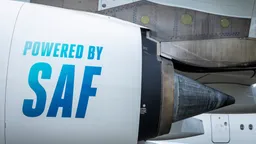Cutting through the noise on contrails

Let’s cut through the noise of the choir of the uncertain and examine what we know—and what we still need to address—regarding aviation's non-CO2 emissions as of 2024.

Let’s cut through the noise of the choir of the uncertain and examine what we know—and what we still need to address—regarding aviation's non-CO2 emissions as of 2024.
‘In aviation we don’t like uncertainty. If it’s not sure, we don’t move’. This quote, which resonated throughout last week’s ICAO Symposium on non-CO2 aviation emissions, encapsulates a common mindset in the industry. But is that so? Is everything about non-CO2 so unsure that we shouldn’t take action at all? Let’s cut through the noise of the choir of the uncertain and examine what we know—and what we still need to address—regarding aviation's non-CO2 emissions as of 2024.
The first ever global non-CO2 aviation event took place last month in Montreal, under the auspices of ICAO’s UN’s aviation body. ICAO is in charge of setting up global policies and standards for aviation, including those of environmental nature. For example, adopted in 2022, the so-called Long Term Aspirational Goal (LTAG for short) establishes the goal of net-zero emissions by 2050. Unfortunately, neither the LTAG, nor other ICAO policies or resolutions target non-CO2 emissions, despite the fact that they represent a significant share of aviation’s warming impact and have been known of since at least 1999, when the IPCC - at ICAO’s request - published a report on the topic.
In any case, the long overdue conference was an opportunity to have a meaningful discussion with relevant stakeholders. It seems evident that, by gathering the best scientists, the aviation industry, decision-makers from both sides of the Atlantic, innovating start-ups and a few NGOs, you’d be able to make progress on tackling one of aviation’s biggest climate problems? Well, not really. And this is why: the conference was filled with debbie downers. Over and over again, it was said that the science of non-CO2 emissions is uncertain, which is true, to some extent. But the uncertainty card was used as the perfect excuse to further delay any action proposed by the smaller group of the willing.
As I left the conference after three intense days, I was more intrigued by the topics that were not brought to the table rather than the ones - like uncertainty - which were repeated over and over again.
First, climate urgency. The elephant in the room. Whether the warming impact of contrails is equal to that of CO2, or three times higher, it won’t change the fact that contrails contribute significantly to an already alarming climate situation. The industry bangs on about the climate benefits of incremental efficiency savings brought by new planes that take decades to be delivered, why wouldn’t they bang on in the same way about reducing warming emissions that can be tackled tomorrow? And yet, the green claims and the net zero goals ignore non-CO2 emissions completely.
Second, non-CO2 as a climate issue was presented as a novelty. But is it that new? It was first explored by scientists as far back as the 1970s. To be fair, we can’t expect industry stakeholders and policy makers to always be up to date on the latest scientific research on atmospheric physics. But the IPCC report published in 1999 made it quite clear how big the problem was. It was published 25 years ago. Since then, many research papers and studies have been published, clearly showing that even with the most conservative estimates, the impact of non-CO2 emissions is warming. Nobody can claim that, 25 years later, non-CO2 is a new issue we didn’t know about.
Third, while not neglecting the scientific uncertainties that remain, there is a lot the industry can already do, as demonstrated at the conference. Solutions like Flightkeys' flight planning software, which includes contrail avoidance features, are already available. Research institutes, ANSPs, and airlines are conducting live trials, like those in the MUAC area, proving the feasibility of navigating to reduce contrails. Why not use the already existing solutions and research to start acting tomorrow? So much is possible. Implement comprehensive monitoring to gather non-CO2 emissions data to further scientific understanding. Focus on regional collaboration in contrail-prone areas, such as the North Atlantic, and conduct large-scale trials to assess feasibility. Explore cleaner fuels as a potential pathway to mitigate non-CO2 impacts. Yet, nobody dared to put an action plan or a roadmap out there.
The time for excuses has long passed. The science may not be perfect, but the tools and knowledge we have today are more than enough to start mitigating the harmful impacts of non-CO2 aviation emissions. Waiting for absolute certainty is a luxury the climate crisis can’t afford. The aviation industry and regulators have the opportunity—and the responsibility—to lead. If we don’t act now, the consequences will be severe—not just for the environment, but for all of us.


An analysis of the impact of aviation taxes, fees and charges on demand
